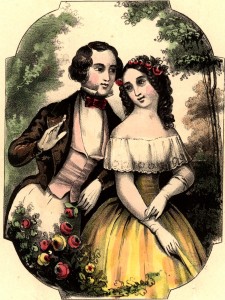 Just where St. Valentine fits into Valentine’s Day and why the day should be named in his honor is a little bit of a mystery – it is really Cupid’s day, and one could scarcely accuse the little love god of having ever been a bishop of the early Christian church.
Just where St. Valentine fits into Valentine’s Day and why the day should be named in his honor is a little bit of a mystery – it is really Cupid’s day, and one could scarcely accuse the little love god of having ever been a bishop of the early Christian church.
The St Valentines were, for there were two of them, involved in the early church. One was a bishop of the church in Greece and cured the son of a rhetorician, Craton, of a serious illness. The second St Valentine, who was the main inspiration for the holiday, was one of the earliest of the Roman popes at the time of the Claudian persecutions in the third century. Because of his success in conversions he was cast into prison along with many of his followers. He, too, raised the sick, for he restored the sight of the little daughter of his jailor. Despite that, he was martyred for his faith. Perhaps the generous deeds of these two Christians their giving of their power with no thought of recompense was the foundation upon which the custom of anonymous giving on St Valentine’s Day is based.
Further than that, though, the association of the day with the saint is ambiguous. Indeed, it seems to have been nothing more than a coincidence which came about in this fashion: St. Valentine suffered martyrdom because of his displeasing the Emperor by converting hundreds of pagan Romans to Christianity, on February 14, A. D. 270. Later, when he was canonized and placed on the calendar of saints, his name was bestowed on the day of his death, which was made a festival in order to offset the festive influence of the Roman Lupercalia. This great Roman holiday was held on the 15th of February, in honor of Pan and Juno. The Roman young men would celebrate by drawing of the names of young girls from a box and then this random process would determine who was his valentine for the remainder of the year. The boy was also expected to give his valentine a gift. There are multiple variation of the same tradition found in various countries throughout the ages continuing until the present day.
With the advent of Christianity an effort was made to substitute Saints’ names for the girls’, but, alas, the early Christians found that the youth quickly lost interest in the pastime with the feminine element removed. Especially in France did this lottery of love reach its highest development. An equal number of belles and beaux assembled and inscribed their names on billets. These were then placed in two receptacles, the men drawing from one and the maids from the other. Thus each drew the name of a member of the opposite sex.
Mission, a learned traveler, published a book of his travels in England, in 1698. He says in part: “On the eve of St. Valentine’s Day the young folks in England and Scotland celebrate the festival according to a very ancient custom. An equal number of maids and bachelors get together; each writes his true or some feigned name upon separate billets, which they roll up and draw by way of lots, the maids taking the men’s billets and the men the maids’, so that each of the young men lights upon a girl that he calls his Valentine, and each of the girls upon a young man whom she calls hers. By this means each has two Valentines, but the man sticks faster to the Valentine he has drawn than to the Valentine to whom he has fallen. Fortune having thus divided the company into so many couples, the Valentines give balls and treats to their mistresses, wear their billets several days upon their bosoms or sleeves and this little sport often ends in love.” A few centuries ago Milady Fair was all a-flutter over a tender, anonymous missive, written in long hand on plain note paper, placed under her door or deftly thrown In at her window. Whereas these days ladies demand and receive an elaborate and costly creation of roses, paper and lace, or diamonds if they are lucky and at least some chalky heart candy if not.